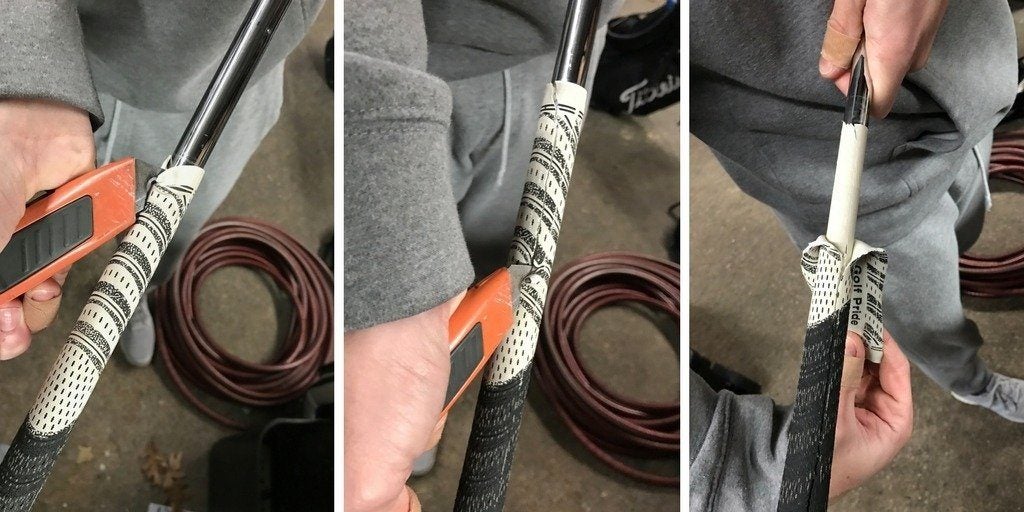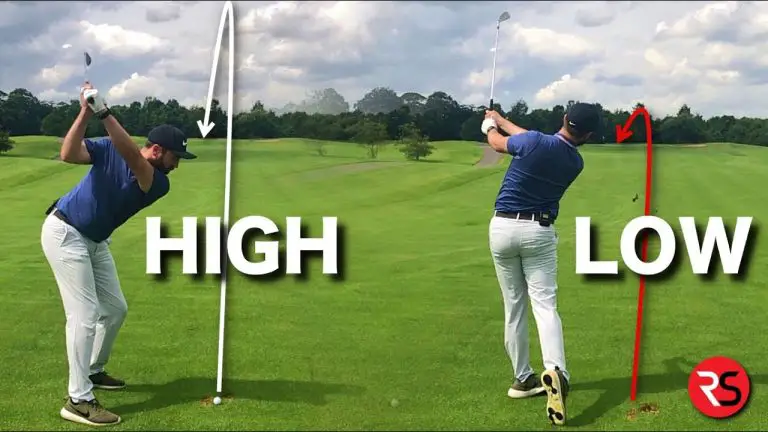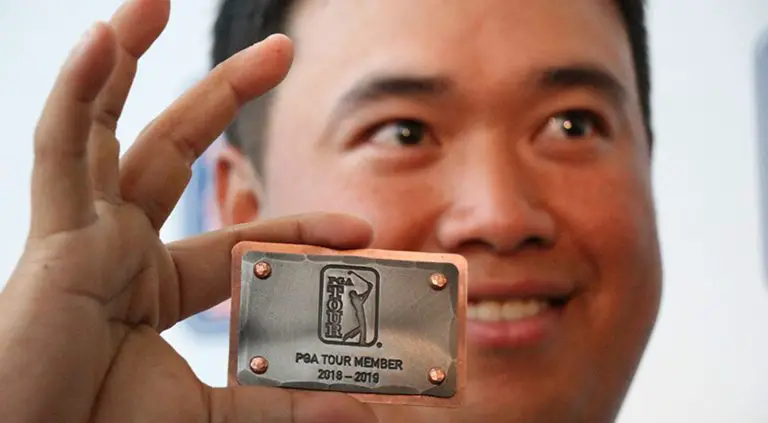How Long Does It Take To Regrip Golf Clubs
Regripping golf clubs is a fundamental task that every golfer should consider to maintain optimal performance and control on the course. Over time, the grips on golf clubs wear out, losing their tackiness and compromising the golfer’s ability to maintain a secure hold. But how long does it actually take to regrip golf clubs? This question often arises as golfers seek to plan their equipment maintenance efficiently.
In this article, we will delve into the intricacies of regripping golf clubs and explore the factors that influence the time required for this process. We will discuss the importance of regripping, including how it enhances grip performance, prevents slippage, reduces hand fatigue, and ensures safety during swings. By understanding the benefits of regripping, you’ll gain a deeper appreciation for this essential aspect of golf club maintenance.
Furthermore, we will examine the various factors that affect the time needed to regrip golf clubs. Factors such as the skill and experience of the person regripping, the type of grip being used, the number of clubs in the set, and the tools available will all contribute to the overall time required.
Whether you’re a seasoned golfer or a beginner, understanding the regripping process and the time commitment involved will allow you to plan effectively and ensure that your golf clubs are always in optimal condition for your next round. So, let’s dive in and discover just how long it takes to regrip golf clubs.

Why should you regrip your golf clubs?
Before we delve into the time it takes to regrip golf clubs, let’s explore why regripping is essential for golfers of all levels.
Enhancing grip performance and control
The grip is the only contact point between the golfer and the club. A deteriorated grip can compromise your ability to maintain a secure hold on the club, resulting in decreased control and accuracy during your swings. By regripping your clubs, you can restore the grip’s tackiness and ensure a confident connection between your hands and the club.
Preventing slippage and maintaining club control
Over time, the grip’s material wears down, losing its ability to provide ample friction against your hands. This can lead to slippage and an unstable hold on the club, especially in humid or sweaty conditions. Regripping your clubs allows you to replace the worn-out grips and maintain better control over your shots.
Reducing hand fatigue and improving swing consistency
Fatigue in the hands can occur when gripping clubs with worn-out grips. Gripping too tightly to compensate for the lack of traction can strain your hands, leading to discomfort and decreased swing consistency. By regripping your clubs, you can alleviate hand fatigue and promote a more relaxed grip, resulting in smoother swings and improved consistency.
Ensuring safety and reducing the risk of injury
Golf clubs swinging at high speeds pose inherent risks if not securely held. A loose or slippery grip increases the chances of club slippage during the swing, potentially causing accidents or injuries. Regripping your clubs at appropriate intervals minimizes the risk of mishaps and ensures a safer golfing experience for yourself and those around you.
Now that we understand the importance of regripping, let’s explore the various factors that can affect the time required to regrip your golf clubs.
Factors affecting the time required to regrip golf clubs
The time it takes to regrip golf clubs can vary based on several factors. It’s essential to consider these factors to accurately estimate the time needed for the regripping process.
Skill and experience of the person regripping
The skill and experience of the individual performing the regripping task play a significant role in determining how long it takes to regrip golf clubs. Experienced golfers or professionals who have regripped clubs numerous times are likely to complete the process more quickly and efficiently than those new to the task.
Type of grip being used
Different types of grips have varying installation methods, affecting the time required for regripping. For example, some grips may have adhesive backing or require additional layers of grip tape, while others may feature a simpler installation process. The complexity of the grip you choose can influence the overall regripping time.
Number of clubs to be regripped
Regripping a single club will naturally take less time compared to regripping an entire set of clubs. If you need to regrip a full set consisting of multiple irons, wedges, woods, and putters, it will require more time and effort to complete the regripping process for each club.
Tools and equipment available
Having the necessary tools and equipment readily available is crucial for an efficient regripping process. Using specialized tools designed for regripping, such as a grip removal tool, grip tape dispenser, solvent applicator, and vice, can significantly expedite the task. If you have access to these tools, the regripping process is likely to be faster and more streamlined.
Now that we have discussed the factors that can influence the time required to regrip golf clubs, let’s explore how long it typically takes to regrip a single golf club in detail.
How long does it take to regrip a single golf club?
Regripping a golf club involves several steps, from removing the old grip to installing the new one. While the time required can vary depending on factors we discussed earlier, let’s go through a step-by-step process and estimate the time for each stage.
- Removing the old grip:
- This step involves cutting or peeling off the old grip and removing any adhesive or residue left on the shaft.
- On average, removing the old grip can take around 5 to 10 minutes per club.
- Preparing the shaft:
- After removing the old grip, it’s essential to clean and prepare the shaft for the new grip.
- This typically involves using a solvent to remove any remaining adhesive or debris.
- The time required for preparing the shaft can range from 2 to 5 minutes per club.
- Applying grip tape:
- Grip tape provides a secure bond between the grip and the shaft.
- Applying grip tape involves wrapping the tape evenly and tightly around the shaft, leaving no gaps.
- It may take approximately 3 to 5 minutes per club to apply the grip tape properly.
- Installing the new grip:
- Installing the new grip involves sliding it onto the shaft and aligning it correctly.
- Care must be taken to ensure the grip is straight and in the desired position.
- On average, it may take around 5 to 10 minutes per club to install the new grip securely.
- Allowing the grip to dry:
- After installing the new grip, it’s crucial to allow sufficient drying time for the adhesive to set.
- The drying time can vary depending on the type of grip and adhesive used.
- Typically, it is recommended to let the grip dry for at least 2 to 4 hours or as per the manufacturer’s instructions.
Please note that the time estimates provided are general guidelines and can vary based on individual factors. Skill, experience, and familiarity with the process can significantly impact the speed at which you can complete each step.
Now that we have explored the time required to regrip a single golf club, let’s discuss the time it takes to regrip a full set of golf clubs.
How long does it take to regrip a full set of golf clubs?
Regripping a full set of golf clubs involves repeating the regripping process for each club in your set. While the overall time will depend on the number of clubs you have, several factors can help streamline the regripping process for multiple clubs.
Estimating the time required for each club:
To estimate the time it takes to regrip a full set of golf clubs, you can multiply the average time per club by the total number of clubs in your set. For example, if it takes approximately 20 minutes to regrip a single club and you have a set of 14 clubs, the estimated time for regripping the entire set would be around 280 minutes or 4.5 hours.
Factors to consider when regripping multiple clubs:
Regripping multiple clubs can be time-consuming, but there are strategies you can employ to expedite the process:
- Streamlining the process: When regripping multiple clubs, streamlining the process can save you time and effort. Here are some tips to make the regripping process more efficient:
- Organize your workspace: Set up a dedicated workspace where you can comfortably regrip your clubs. Ensure you have enough space to work on multiple clubs simultaneously without feeling cramped or disorganized.
- Preparation in advance: Gather all the necessary tools, supplies, and grips you will need before you begin the regripping process. This avoids interruptions and saves time spent searching for items during the task.
- Create an assembly line approach: Rather than completing the regripping process for each club individually, consider adopting an assembly line approach. For example, remove the old grips from all the clubs first, then prepare the shafts, apply grip tape to all the clubs, and finally install the new grips. This way, you eliminate repetitive tasks and minimize transitions between different steps.
- Regrip multiple clubs simultaneously: If you feel comfortable and confident in your regripping skills, you can work on regripping multiple clubs simultaneously. This can be particularly efficient during steps such as applying grip tape and installing new grips. However, ensure that you maintain accuracy and precision in each step to avoid any mistakes.
- Utilize a vice or grip station: Using a vice or a grip station can provide stability and ease during the regripping process. These tools securely hold the club while you work, allowing for more efficient grip removal, shaft preparation, and grip installation.
While employing these strategies can speed up the regripping process, it’s essential to maintain attention to detail and ensure the quality of each regripped club. Rushing through the process without proper care can lead to subpar results and affect your performance on the course.
Seeking professional regripping services
Regripping golf clubs can be a DIY task for many golfers, but there are instances where seeking professional regripping services might be advantageous. Here are a few considerations when deciding whether to enlist professional help:
Benefits of using professional regripping services
- Expertise and experience: Professional club fitters and regrippers have extensive experience in regripping golf clubs. They possess the skills and knowledge to handle various types of grips and clubs, ensuring a high-quality and precise regripping job.
- Specialized tools and equipment: Professionals typically have access to a wide range of specialized tools and equipment specifically designed for regripping. This allows them to perform the task more efficiently and effectively.
- Time-saving: If you have a busy schedule or prefer to focus your time and energy on other aspects of your game, utilizing professional regripping services can save you valuable time.
Time and cost considerations
Professional regripping services usually offer quick turnaround times. Depending on the workload and their schedule, they can regrip your clubs within a day or two. However, it’s worth considering the cost associated with professional services, as it can vary depending on factors such as the number of clubs and the type of grips chosen.
When deciding between DIY regripping and professional services, consider your time availability, budget, and your confidence in your regripping abilities. Weigh the advantages and disadvantages to make an informed decision.
How often should you regrip your golf clubs?
Regripping frequency depends on various factors, including the frequency of use, climate conditions, grip material, and personal preference. While there is no fixed rule, here are some general guidelines to help you determine when to regrip your golf clubs:
- Frequency of use: Regular players who frequently use their clubs may need to regrip more often compared to occasional golfers. Frequent use wears down the grips faster, reducing their performance and effectiveness.
- Climate conditions: If you frequently play in humid or wet conditions, the moisture can accelerate the wear and deterioration of the grips. Similarly, extreme heat or exposure to sunlight can cause grips to harden and lose their tackiness. In such cases, more frequent regripping may be necessary to maintain optimal performance.
- Grip material and durability: Different grip materials have varying levels of durability. Some materials, such as rubber or hybrid compounds, tend to wear out faster than others. Consider the lifespan and durability of the grip material you choose when determining regripping intervals.
- Signs indicating the need for regripping: Pay attention to signs that indicate your grips are no longer performing as they should. These signs can include noticeable wear, smooth or shiny patches, cracks, or a loss of tackiness. If you experience any of these signs, it’s a clear indication that regripping is necessary.
Ultimately, the decision of when to regrip your golf clubs will depend on a combination of these factors and personal preference. Some golfers prefer a more proactive approach and regrip their clubs annually or biannually, while others may wait until they observe significant wear or performance issues.
Conclusion
Regripping golf clubs is a crucial aspect of maintaining optimal performance, control, and safety on the golf course. While the time required to regrip golf clubs can vary based on factors such as skill level, grip type, and the number of clubs, following a systematic approach and employing efficient techniques can streamline the process.
By understanding the importance of regripping and considering factors like grip wear, frequency of use, and climate conditions, you can determine the optimal time to regrip your clubs. Whether you choose to embark on a DIY regripping project or seek professional regripping services, the goal remains the same: to ensure that your grips provide the necessary traction, control, and comfort to enhance your golfing experience.
Remember, regripping is not only about improving your performance but also about maintaining safety on the course. Take the time to assess the condition of your grips regularly and make informed decisions about when to regrip. With proper care and attention to your equipment, you’ll be able to enjoy a confident grip and better control over your shots, ultimately enhancing your overall golf game.





